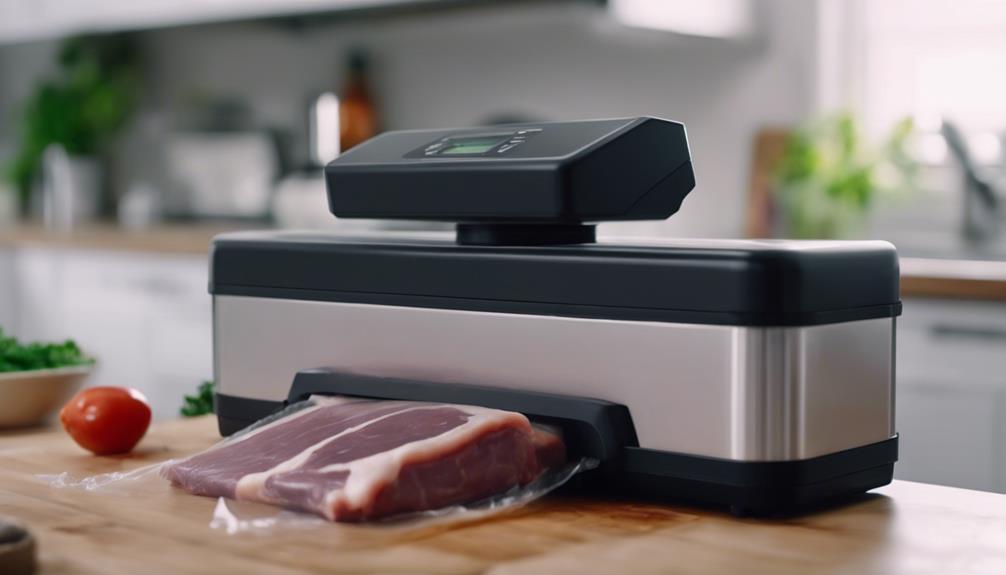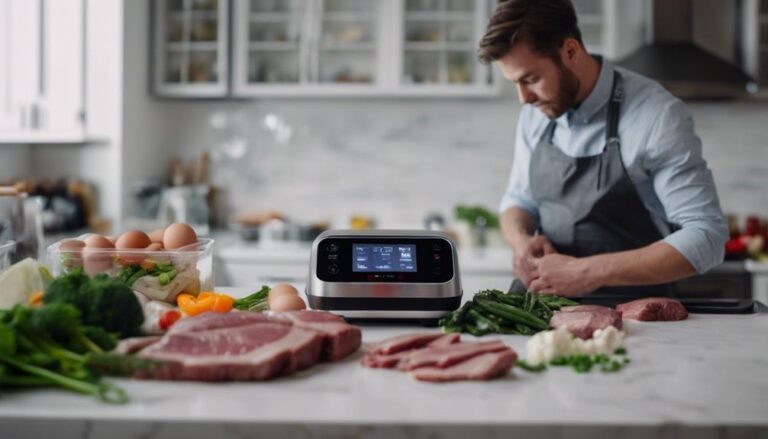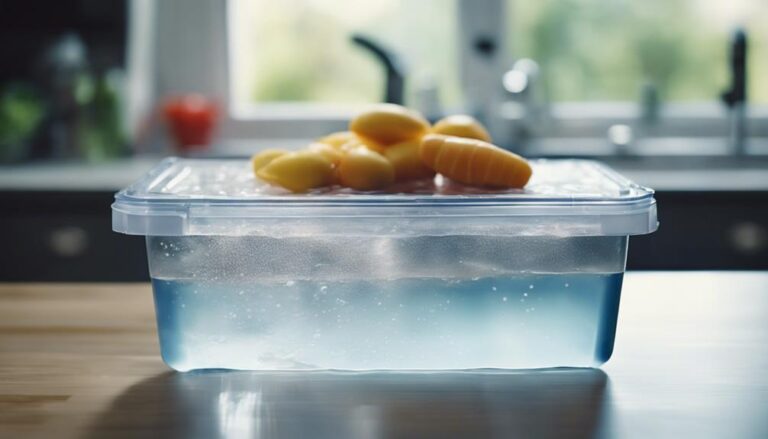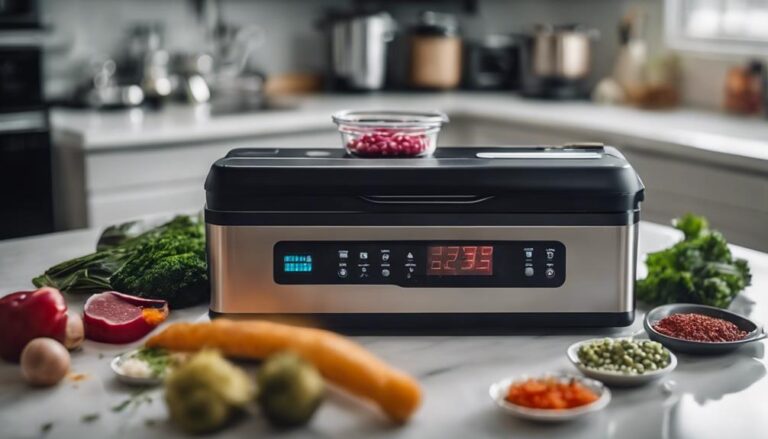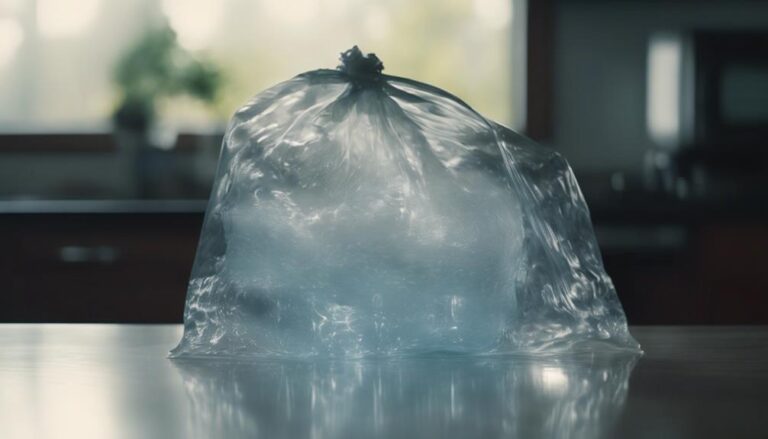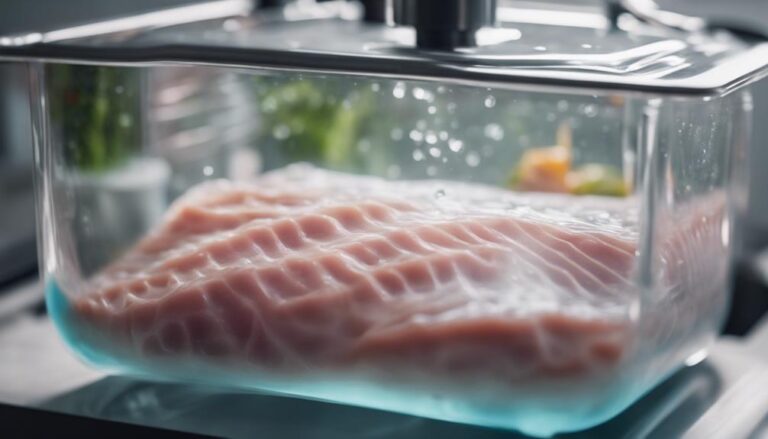An Introduction to Vacuum Sealing for Sous Vide Cooking
If you're ready to step up your sous vide game, mastering vacuum sealing is essential. It amps up flavors, keeps cooking consistent, and maintains ingredient quality. Locking in juices and flavors while removing air enhances your meals. Pay attention to sealing techniques for best results. Preserving freshness is key for great taste and extended shelf life. Choose equipment wisely for tight seals and fresh meals every time. Ready to take your sous vide dishes to the next level? There's more to discover about vacuum sealing techniques and its benefits.
What You Will Learn Here
- Vacuum sealing preserves flavors, nutrients, and freshness in sous vide cooking.
- Eliminating air pockets ensures even cooking and enhances heat transfer efficiency.
- Proper sealing techniques guarantee airtight seals for optimal sous vide results.
- Vacuum sealing equipment maintains quality, extends shelf life, and prevents flavor dilution.
- Double-sealing, using water baths, and monitoring food temperature enhance vacuum sealing effectiveness.
Benefits of Vacuum Sealing in Sous Vide
When vacuum sealing for sous vide cooking, you ensure that flavors, seasonings, and natural juices are sealed in for a tastier and more textured outcome. This method guarantees that your dishes are infused with the exact flavors you intended, creating a culinary experience that delights the taste buds of those you serve.
By vacuum sealing your ingredients, you establish a controlled environment where the food is shielded from water infiltration, leading to consistent cooking results every time. In sous vide cooking, maintaining precise temperature control is essential for achieving perfectly cooked meals, and vacuum sealing aids in this process by eliminating air pockets that can cause temperature fluctuations.
Not only does vacuum sealing enhance the absorption of marinades and seasonings into your food, but it also helps preserve the freshness and quality of your ingredients throughout the cooking journey. With vacuum sealing, you can elevate your sous vide dishes to new levels of deliciousness, impressing those you cook for with every bite.
Importance of Air Removal
When vacuum sealing for sous vide, eliminating air is crucial. It promotes uniform cooking by boosting heat transfer.
Additionally, it aids in preserving a tight seal for your food.
Air Removal Benefits
To enhance the quality and longevity of your sous vide cooking, the importance of air removal through vacuum sealing can't be overstated. Here are some key benefits of air removal when using sealed bags for sous vide cooking:
- Preserves flavors: Eliminating air prevents oxidation and spoilage, preserving the taste of your ingredients.
- Maintains texture: Tight vacuum seals help retain the texture and quality of food throughout the cooking process.
- Enhances heat transfer: Removing air allows for more efficient and even cooking, ensuring consistent results.
- Extends shelf life: Proper air removal reduces the risk of bacteria growth, keeping stored foods fresh for longer periods.
Enhancing Food Quality
Vacuum sealing plays an essential role in enhancing the quality of food by effectively removing air from the pouch, creating an airtight environment essential for sous vide cooking. Air removal is important as it prevents oxidation, maintaining the freshness and quality of the food you serve.
By eliminating air, the food retains its natural juices and flavors, ensuring a delicious outcome. Additionally, this process helps with heat transfer efficiency during cooking, resulting in evenly cooked dishes bursting with flavor.
The removal of air also prevents water from entering the pouch, guaranteeing consistent cooking results every time you prepare a meal for your guests. Prioritizing air removal is key to elevating the overall food quality and ensuring a delightful dining experience.
Sous Vide Efficiency
Efficient air removal in sous vide cooking is essential for ensuring precise temperature control and consistent heat distribution throughout the cooking process. When it comes to vacuum sealing for sous vide, removing air is key for best results. Here are some key points to ponder:
- Vacuum sealing eliminates air pockets that can lead to uneven cooking.
- Proper air removal helps food retain its natural juices, flavors, and nutrients.
- Efficient air removal through vacuum sealing prevents moisture loss and flavor dilution.
- The absence of air in vacuum-sealed bags allows for better heat conduction, resulting in evenly cooked dishes.
Enhancing Flavor Through Sealing
Locking in the natural flavors of ingredients, vacuum sealing enhances the overall taste of your sous vide dishes. When you seal your food airtight, you guarantee that no flavors escape during the cooking process, resulting in a more flavorful outcome.
The sealed environment created by vacuum sealing allows your ingredients to marinate and soak up seasonings, maximizing flavor absorption. By safeguarding your food from exposure to air, vacuum sealing preserves its original taste and freshness.
The pouch formed by vacuum sealing acts as a protective barrier that traps aromatic compounds and flavors within, preventing any loss and leading to a richer end product. Embracing vacuum sealing not only enhances the flavors of your dishes but also elevates the dining experience for those you serve.
Vacuum Sealing Techniques
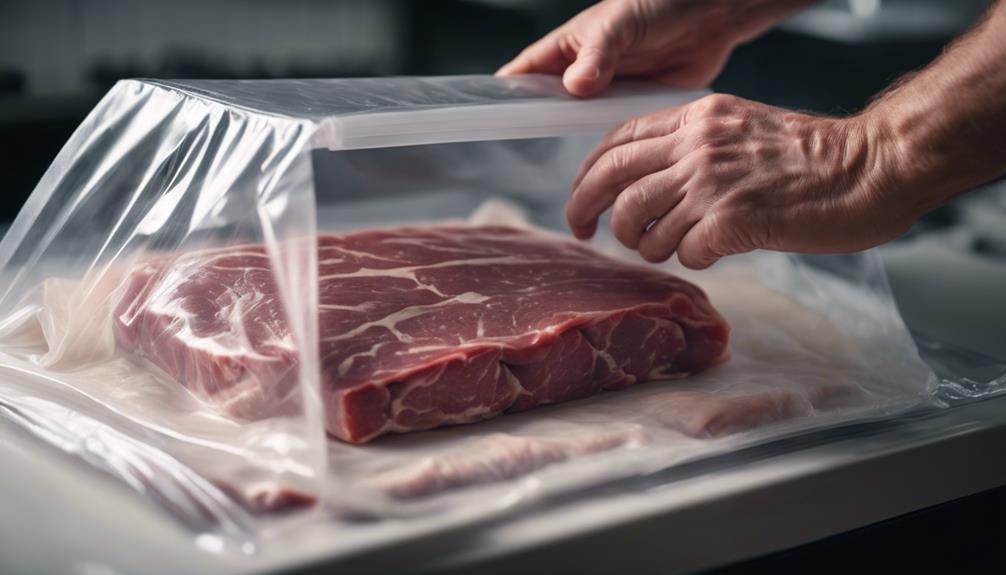
To enhance the effectiveness of your sous vide cooking, perfecting your sealing techniques is crucial for best results. Here are some tips to help you master vacuum sealing for your sous vide dishes:
- Guarantee Seal: Make sure there are no wrinkles or food particles on the sealing area to create a tight vacuum seal.
- Double Sealing: For added security, consider double-sealing your bags to avoid any leaks during the cooking process.
- Using a Water Bath: Before sealing, partially submerge the bag in water to push out the air, making it easier to vacuum seal.
- Monitoring Temperature: Be mindful of the temperature of the food you're sealing, as extreme temperatures can impact the effectiveness of the vacuum seal.
Preserving Freshness in Sous Vide
Preserving freshness in sous vide involves removing air from the bag to prevent oxidation and spoilage, ensuring the maintenance of natural flavors and nutrients. When you vacuum seal your ingredients before sous vide cooking, you create an airtight environment that keeps external flavors and odors at bay, allowing the food to shine with its intrinsic taste. By using a vacuum sealer, you safeguard the delicate balance of flavors and nutrients within your meals, resulting in perfectly cooked dishes every time.
Not only does vacuum sealing enhance the taste of your food, but it also helps in preserving it for longer periods. By reducing exposure to air and bacteria, vacuum sealing extends the shelf life of ingredients, making it convenient to store items for future sous vide preparations. Additionally, this method prevents freezer burn, ensuring that your food retains its quality even after being stored for an extended duration. So, by utilizing a vacuum sealer in your sous vide cooking, you not only enhance the flavors but also maintain the freshness of your ingredients.
Choosing the Right Sealing Equipment
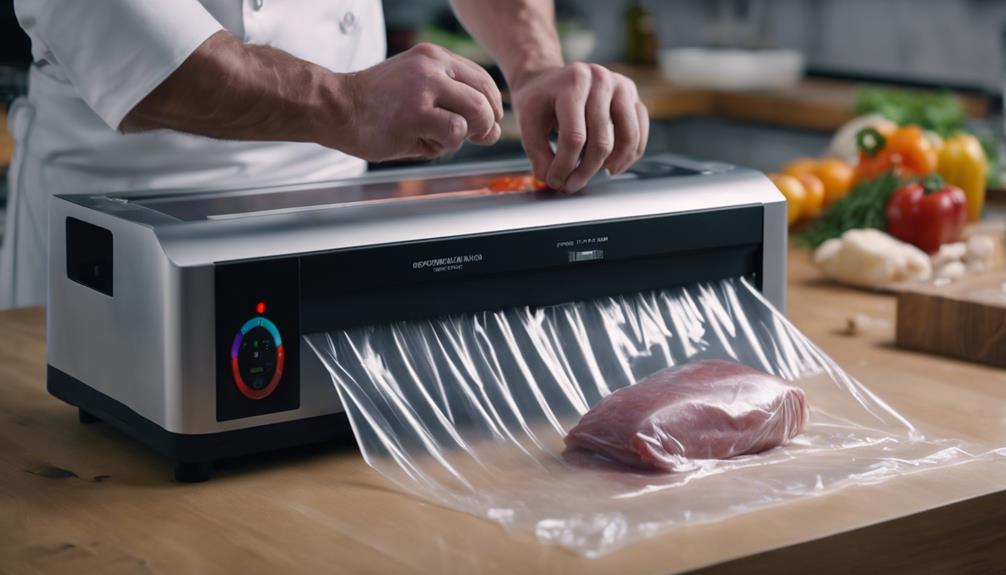
When selecting the appropriate sealing equipment for your sous vide cooking requirements, ensure efficiency and reliability by considering the ZWILLING Fresh & Save vacuum sealer. Here are some key points to keep in mind:
- Guarantee Airtight Seals: Vacuum sealing equipment guarantees airtight seals to prevent water from permeating during sous vide cooking.
- Select Quality Bags: Opt for vacuum sealer bags that provide the tightest seals for best results in sous vide preparation.
- Preserve Freshness: Proper vacuum sealing is crucial for preserving food freshness, flavor, and nutrients in sous vide cooking.
- Versatile Tool: Vacuum sealing equipment, like the ZWILLING Fresh & Save system, is a valuable tool for both storage and sous vide cooking requirements.
Frequently Asked Questions
Do You Need a Vacuum Sealer to Cook Sous Vide?
You don't need a vacuum sealer to cook sous vide. There are alternatives to seal your food, like using water displacement. While a sealer enhances the process, you can still achieve great results without one.
What Is Sous Vide Mode on Vacuum Sealer?
Sous Vide mode on a vacuum sealer is specially made for sealing food for sous vide cooking. It guarantees airtight sealing, keeping water out during cooking. It offers settings for sealing dry and moist foods effectively, optimizing the sous vide experience.
What Foods Should Not Be Vacuum Sealed?
When vacuum sealing, avoid sealing moist foods, delicate items like soft cheeses, and those with high sugar content, as they can spoil or affect the sealing process. Remember not to seal hot foods to prevent bacteria growth.
What Is the Introduction of Sous Vide Cooking?
To introduce sous vide cooking, you'll discover its benefits like precise cooking, tender meats, and juicy flavors. The equipment includes a water bath and vacuum sealer. Master techniques for exceptional dishes with controlled temperatures and perfect textures.
Conclusion
To summarize, vacuum sealing is an essential technique in sous vide cooking. By eliminating air from the bag, you can improve flavors, maintain freshness, and guarantee even cooking.
Selecting the appropriate sealing equipment and mastering the techniques will elevate your sous vide dishes to the next level. So, don't overlook this significant step in your culinary journey. Happy cooking!
